#louis de sade icons
Text








>ヮ< ★ l-louis ? ✩ 📓
#louis de sade#vanitas no carte#the case study of vanitas#les memories de vanitas#vanitas no shuki#vnc#louis de sade layouts#vanitas no carte layouts#vnc layouts#louis de sade icons#vanitas no carte icons#vnc icons#anime#anime layouts#anime icons#messy layouts#manga#manga icons#anime headers#anime packs#vnc packs#messy packs#not forget louis love him sm ;;;#STILL THE DE SADE SIBLINGS DAAY
365 notes
·
View notes
Text
Louis de Sade Icons
Below you’ll find 78 icons of Louis de Sade from Vanitas no Carte. No credit is necessary.
[ Link ]



#Louis de Sade#the case study of vanitas#vanitas no carte#vanitas no shuki#RP Icons#Anime RP Icons#Roleplay Icons#Louis de Sade icons
4 notes
·
View notes
Photo









Vanitas no Carte icons
#vanitas no carte#vanitas no carte icons#vanitas#vanitas icons#noé archiviste#noé archiviste icons#roland fortis#roland fortis icons#louis de sade#louis de sade icons#dominique de sade#dominique de sade icons#chloé d'apchier#chloé d'apchier icons#olivier#olivier icons#olivier vanitas#olivier vanitas icons#jean-jacques chastel#jean-jacques chastel icons#jeanne#jeanne icons#jeanne vanitas#jeanne vanitas icons#icons#anime icons#manga#manga icons#twitter#twitter icons
164 notes
·
View notes
Text




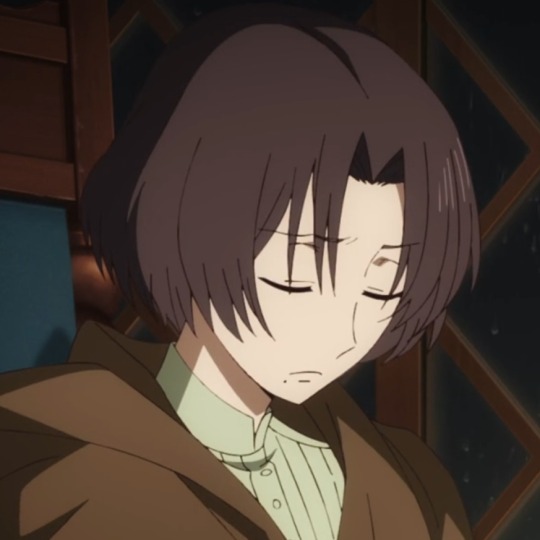
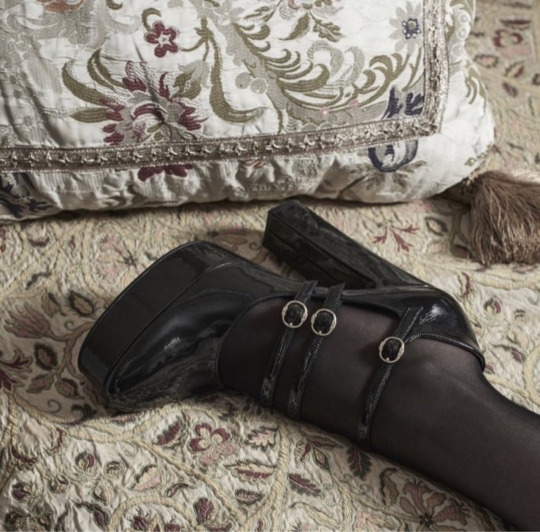



some kind of secret i'll share with you 🪶"☕-🍪
#vanitas no carte#messy moodboard#anime moodboard#vanitas no carte moodboard#vanitas no carte icons#dominique de sade#louis de sade#domi icons#vnc moodboard#vanitas no carte layouts#anime layouts#layouts#messy layouts#dark academia moodboard#louis vanitas no carte#domi vanitas no carte#vnc louis#vnc dominique#carrd stuff#carrd resources#carrd material#brown moodboard#vnc icons#vnc layouts
1K notes
·
View notes
Text
VANITAS NO CARTE ICONS









#anime#anime lover#anime icons#the case study of vanitas#vanitas no carte#vanitas#noe archiviste#vanitas no carte jeanne#dominique de sade#louis de sade#vanitas no carte murr#chloe d'apchier#astolfo granatum#jean jaques
66 notes
·
View notes
Text
i wish i could these three again







Matching icons for three
#anime#anime layouts#vanitas no carte#vanitas no carte noe#vanitas no carte louis#vanitas no carte domi#layout#icons#manga#vampire anime#vanitas#pfp#pfp icons#anime icons#dominique de sade#louis de sade
215 notes
·
View notes
Text
Louis de Sade | The Case Study Of Vanitas | 471 Icons
[ Dropbox ]
Medium: Manga/Anime
Please Like or Reblog if you are using!
None of the Art is by me, all of it belongs to its original Curator.
Examples:



23 notes
·
View notes
Photo


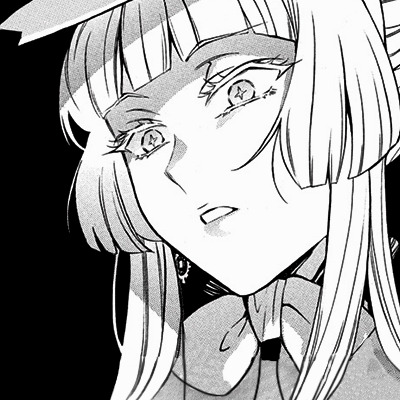




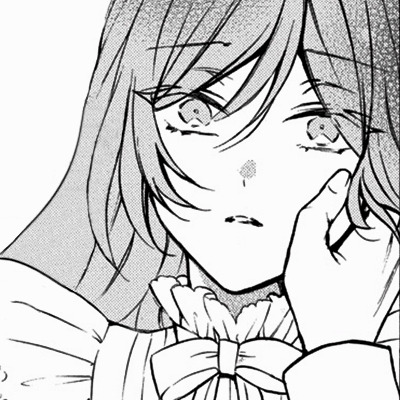

vanitas no carte – chapter 46
icons
#the case study of vanitas#vanitas no carte#vanitas no shuki#vnc#edit#icons#noé archiviste#vanitas#misha#mikhail#veronica de sade#dominique de sade#louis de sade#chapter 46#ch46
659 notes
·
View notes
Text






vanitas no carte
like - reblog if you save
#the case study of vanitas#vanitas no carte#manga icons#vanitas no carte icons#vnc#icons#vnc icons#louis de sade#vnc louis#lucius oriflamme#luca oriflamme#vnc luca#vnc dante#vnc johann#dante#johann
86 notes
·
View notes
Text
33 100x100 Louis de Sade Manga Icons!

I accidentally made some of vanitas first so ill post those too in a sec.. anyways louis is suCH A GOOD BOY THAT DESERVED SO MUCH BETTER.. -Mod Miu

































#pandora hearts kin#ph kin#louis de sade kin#vanitas no shuki kin#vanitasu no shuki kin#the case study of vanitas kin#icons#kin icons#manga icons#pandora hearts icons#mod miu#im so upset#its actually interesting tho
7 notes
·
View notes
Photo






♡ louis de sade icons (200x200) ♡
♡ credit is appreciated ♡
requested by anon
#vanitas no carte#vanitas no shuki#the case study of vanitas#vncedit#vnc#louis de sade#vncdaily#fyvanitasnocarte#dailyanime#anisource#dailymochijun#myedit#myicons#i had rough time with these because louis' scenes are mostly very dark :/#but i hope you like them <3
297 notes
·
View notes
Note
hello! do you have any headers for these two? thank you!


heree, hope one of these match !






#hirotaka nifuji#wotaku ni koi wa muzukashii#wotakoi love is hard for otaku#wotakoi#louis de sade#vanitas no carte#vnc#the case study of vanitas#hirotaka nifuji layouts#wotaku ni koi wa muzukashii layouts#wotakoi layouts#louis de sade layouts#vanitas no carte layouts#vnc layouts#anime#anime layouts#anime icons#messy layouts#manga#manga icons#anime headers#anime packs#messy packs
127 notes
·
View notes
Note
You're the main character in a video-game RPG. What famous people/people of historical note (living or dead) would you put in your party?
H. R. Giger as tank because I think his iconic bordering-on-sublime style would absolutely draw aggro while also being unsettling enough to throw enemy mobs into disarray. Marissa Paternoster (of Screaming Females) and Andrew Hussie (creator of Homestuck) as melee and ranged DPS respectively, for what I imagine are obvious reasons. Jesus is the best white mage/healer by reputation, but I think imma go with Louis Pasteur just to be safe. Marie Curie is the obvious counterpoint elementalist/black mage IMO. And if I complete the side quest on disc 2 causing them to have a little Marcel Mauss, he should inherit fractions of both their abilities and be a pretty optimal generalist, especially if given the De Sade spec for attack boosts instead of trying to do a House of Bourbon spec for social + speed boosts and access to the Steal ability. Thief builds just didn't get the right kind of balance to thrive in late game play. Wow this game got weirdly French, are you sure it's not region locked?
Laura Jane Grace is the party summoner for frankly very queer reasons. Who else do you know who could say a single word and being ALL the trans women in a 3 country radius to her bidding?
~Send me asks or anons for TMI Tuesday!~
4 notes
·
View notes
Text
Parentesi musicale alla rassegna “Il Parco e la Commedia” a Sabaudia
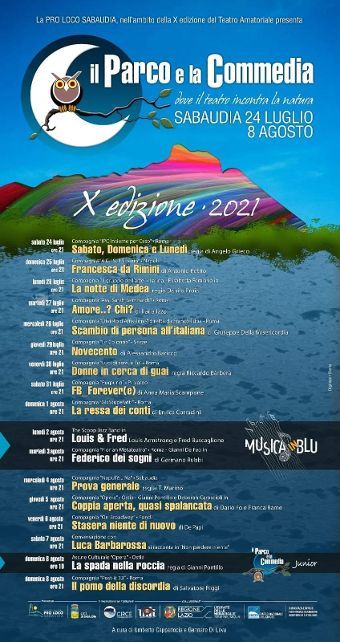
Persone presenti
Persone presenti
TYhe Scoop Jazz Band
Gianni De Feo
Locandina Il Parco e la Commedia
Il Parco e la Commedia cambia ritmo e le sue notti di teatro si dipingono di blu. La decima edizione della rassegna promossa dalla Pro Loco di Sabaudia, curata dal direttore artistico Umberto Cappadocia e dal presidente dell’Associazione Gennaro Di Leva, con i patrocini di Regione Lazio, Provincia di Latina, Città di Sabaudia, Parco Nazionale del Circeo, UILT- Unione italiana libero teatro e Consorzio Pro Loco Circe torna ad accogliere “Musica in Blu, Quando il canto recita”. La “parentesi” in musica, nata nel 2013 in continuità con Il Parco e la Commedia ma allestita nelle precedenti edizioni in centro cittadino nelle “quinte” di Palazzo Mazzoni, riesce a coniugare due espressioni artistiche, la musica e la recitazione, che incontrandosi danno vita a quel recitar cantando tanto caro alla tradizione artistica italiana. A raccontare l’incontro tra musica e recitazione nell’arena del Centro visitatori del Parco nazionale del Circeo, lunedì 2 agosto come sempre alle 21, dei vecchi amici del Parco e la Commedia presenti nel palinsesto della rassegna già dalla seconda edizione. Dalle redazioni delle più importanti testate nazionali torna sul palco del Parco The Scoop Jazz Band, la formazione composta da professionisti dell’informazione, e non solo, che racconterà il suo personalissimo Louis & Fred, un omaggio a due grandi musicisti, due autentici pionieri divenuti icone del jazz: Fred Buscaglione e Louis Armstrong. Musica e parole per ripercorrere l’incontro, in un Sanremo del 1968, tra il padre del jazz moderno e uno dei musicisti più rappresentativi del panorama nazionale, in un avvincente racconto a più voci attraverso le tappe principali di due straordinarie carriere musicali e umane.
Martedì 3 agosto invece, Il Parco e la Commedia esaudisce il desiderio di riavere nuovamente nel proprio palinsesto un interprete eccezionale: Gianni De Feo che trascinerà tutti i presenti nel suo Federico dei sogni. Lo spettacolo, scritto e diretto da Germano Rubbi, con Gianni De Feo e Daniele Mutino e musiche originali di Francesco Verdinelli, celebra in maniera unica e originale la personalità di Federico Fellini, il più geniale e onirico artista italiano del ‘900. Federico dei sogni non è solo uno spettacolo di teatro con musiche dal vivo, né una ricostruzione autobiografica del grande regista, né immagini dei suoi film. Federico dei sogni è un sogno stesso. Un sogno in cui di certo c’è solo la fisicità dell’attore che interpreta il protagonista dalle molteplici identità. I film di Fellini, gli aneddoti sconosciuti e le curiosità più bizzarre, le visioni riportate nei disegni del Maestro appaiono come tutto e il contrario di tutto. Quando sembra che il protagonista stia descrivendo la scena di un suo film, c’è sempre un cambio di traiettoria nei suoi pensieri che rimette in discussione le poche certezze che lo spettatore stava afferrando: è un racconto o un sogno? La risposta, forse, può essere svelata solo attraverso la capacità di sognare a occhi aperti.
Ogni appuntamento è come sempre a ingresso gratuito (fino a esaurimento dei posti contingentati nel rispetto della normativa anti-contagio) grazie all’imprescindibile sostegno economico di attività produttive che rinnovano il loro contributo e all’apporto degli Enti che con il loro appoggio consentono di portare in scena serate di teatro, dialogo e collaborazione, in uno dei luoghi più rappresentativamente “nostro” di questo territorio.
BIOGRAFIE:
Gianni De Feo Formatosi a Parigi dove studia tecniche del movimento presso la scuola di Jacques Lecoq, tecniche vocali e canto presso la Schola Cantorum, parola e gesto nello spazio scenico di Peter Brook con la direzione di Jean Paul Denizon, vive e svolge principalmente la propria attività professionale a Roma. E’ diretto, tra gli altri, da Sylvano Bussotti, Mario Scaccia, Werner Schroeter, Roberto De Simone, Lindsay Kemp, Dacia Maraini, Maurizio Scaparro, Antonio Salines. Per alcuni anni collabora con il Teatro Bellini di Napoli, partecipando inoltre all’ allestimento dell’“Opera da tre soldi” di B. Brecht nel ruolo del Cantastorie a cura di Tato Russo. Al Globe Theatre di Roma è Oberon nel Sogno di una notte di mezz’estate di Shakespeare, diretto da Riccardo Cavallo. Tra i ruoli principali interpreta Giacomo Leopardi, Marcel Proust, il Marchese De Sade, Jean Cocteau, Amedeo Modigliani, Oscar wilde, Eleonora Pimentel Fonseca. Dopo aver realizzato una versione musicale della Salomè di Oscar Wilde, mette in scena, come regista e interprete, diversi spettacoli di teatro-canzone ispirati ad alcuni grandi personaggi della musica tra cui Edith Piaf, Sergio Endrigo, Jacques Brel, Charles Aznavour.
Daniele Mutino Compositore, pianista, fisarmonicista, cantastorie e antropologo culturale.Come compositore, oltre alla musica per i propri progetti e spettacoli, ha composto e realizzato la colonna sonora originale di numerosi spettacoli teatrali in Italia e all’estero (Portogallo, San Francisco, New York), partecipando anche alla realizzazione di film, docufilm e documentari per il cinema, la televisione e il web; tra i numerosi registi con cui ha realizzato in questo senso segnaliamo: Davide Iodice, Paolo Castagna, Veronica Cruciani, Paolo Pasquini, Jurgen Fritz, Per Jason, Mario Martone, Christopher Fulling, Nuccio Siano, Lidia Biondi, Memè Perlini, Nino Racco, Valentina Padovan e Antonio Damasco per il teatro, Loredana Dordi, Wladimir Therkoff, Felice Farina, Pino Iannelli, Salvatore Samperi per la televisione, Mario Martone e Eugenio Cappuccio per il Cinema. La scrittrice e giornalista Maria Lanciotti, attraverso una lunga intervista, ha scritto su di lui un libro dal titolo “Storia di un cantastorie – Daniele Mutino una fisarmonica itinerante”, Edizioni Controluce (I edizione 2014, II edizione 2019), libro vincitore del “Premio Capit per l’editoria del III millennio”.
Germano Rubbi Attore, autore e regista compie i primi passi come attore teatrale giovanissimo interpretando nel tempo ruoli in diverse produzioni, sia teatrali che televisive, lavorando per registi e gruppi quali Beppe Chierici, Paolo Baiocco, Mario Mearelli, Cathy Marchand (living theater), Raffaele Mertes, Carlo Emilio Lerici, Antonio Salines (teatro “Belli”). Compie i propri studi universitari presso “la sapienza” di Roma dipartimento Arti e Scienze dello Spettacolo in cinema e teatro, rivolgendo i propri studi specialistici verso la messinscena del teatro greco, della commedia dell’arte, del teatro contemporaneo e dell’analisi del linguaggio cinematografico, avendo l'occasione di frequentare i maggiori pedagoghi, italiani e non, di regia, drammaturgia e sceneggiatura quali: Eimuntas Nekrosius, Salvatore Maira, Josè Luis Sànchez Martin, Gabriele Lavia, Claudio de Maglio, Ferruccio Marotti, Clelia Falletti, Luciano Mariti. Firma numerose regie di spettacoli di teatro e cortometraggi in diversi teatri e manifestazioni nazionali ed internazionali.Collabora stabilmente con Enti locali, teatri e con scuole medie, superiori e college come referente di progetti riguardanti laboratori di produzione cortometraggi e laboratori teatrali sia in Italia che all’estero (USA; Canada; Francia). Dal 2017 è direttore artistico dell’associazione “Magazzini artistici”.
Francesco Verdinelli Ha composto ed eseguito musica dal 1979 ad oggi per oltre 250 fra spettacoli teatrali, musicals, piéces, film, documentari, con le regie diTinto Brass, Roberto Lerici, Giancarlo Nanni, Antonio Salines, Rodolfo Rodriguez, Bob Marchese, Simone Carella, Peter Chatel, Andrea Buscemi, Mario Prosperi, Gianni Ippoliti, Carlo Emilio Lerici, Luca De Bei, Alessandro Machia, Saverio Deodato, Gaia Riposati, Alberto Bassetti, Salvatore Braca, Maria Rosaria Omaggio, Enrico Maria Lamanna, Germano Rubbi, Gianni de Feo, Isabel Russinova, Cinzia Monreale, Luciano Roman, Fabrizio Bancale, e molti altri. Inizia dal 1982 a comporre colonne sonore per televisione e per il cinema e parallelamente scrive musica per diversi musical, alcuni dei quali con record assoluto di repliche in Italia. A questi primi lavori seguono fino al 2014 oltre 160 documentari e film per i quali ha scritto la musica originale (Cuore Cattivo, di Umberto Marino con Kim Rossi Stewart e Valerio Mastrandrea; Angela come te con Barbara de Rossi e Antonella Ponziani, Diritto di sognare di Renzo Rossellini e molti altri) Nel 1996 compone le musiche ufficiali per il trentennale del WWF Italia, Con gli occhi del Panda. Nel 2007 è il compositore dell'inno ufficiale del WWF Russia. Nei primi anni di attività (fine anni ’70) parallelamente alla composizione ha suonato dal vivo e in studio di registrazione con diversi artisti fra i quali Lucio Dalla, Ron, Ivan Graziani, Jenny Sorrenti e numerosi altri.
Read the full article
0 notes
Photo
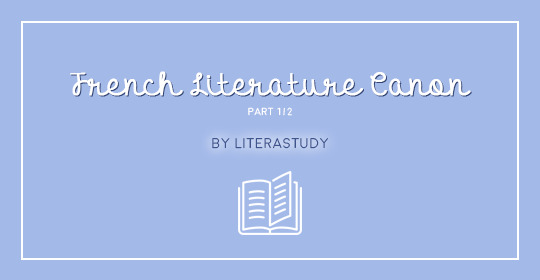
Ever wanted to start reading French authors and French literature, but never knew where to start? Here is a list of major works that are seen as staples of their movement or era for you to start with. 😋 (This is part 1 of 2, it covers literature before the French Revolution.)
Please note that this selection is arbitrary and not exhaustive, and many more authors and works could be included here, but it was necessary to make choices for the sake of providing a relatively brief but comprehensive list. Titles are provided in their original French version to avoid any confusion.
A. Medieval Era
La Chanson de Roland by Anonymous
Chanson de geste (epic poem)
c. 1040-1115.
This song depicts the Battle of Roncevaux in 778, where Charlemagne and his men fought against the Basques. It is part of a broader trend in chansons de geste to depict the acts of Charlemagne in general, an era seen as one of grandeur by French people of the time.
Les Lais de Marie de France by Marie de France
Lais
c. 1160-1210
This work is a collection of 12 stories written in verse and inspired by Breton and Celtic folklore. Marie de France’s work had a large influence on romance literature, and she is the first French woman poet we know of.
Le Roman de Renart by Multiple authors
Fabliaux
c. 1174-1250
Renart is a mischievous anthropomorphic fox character known in most European countries during the Middle Ages through comedic oral tales and written stories. These tales were written and collected during the 12th and 13th centuries, a lot of them being anonymous. His names comes from the Germanic “Reinhard”. The stories were so popular that the name renard eventually replaced the name goupil, from the Latin vulpes, in most French dialects.
Yvain ou le Chevalier au Lion by Chrétien de Troyes
Romance in verse
c. 1176
This Arthurian romance is a great archetype of the Arthurian universe during the Middle Ages. A lone knight from the court of King Arthur is called on an adventure into the wild and fantastic world of the forests of Bretagne, on a quest to conquer the heart of his lady.
La Queste del Saint Graal by Anonymous
Romance in prose
c. 1225-1230
This romance is part of a larger cycle called the Lancelot-Graal, which was the most famous prose iteration of the Arthurian kingdom’s adventures during a big part of the Middle Ages. It tells the adventures of Arthurian knights sent to retrieve the Holy Grail in the name of the King.
Le Roman de la Rose by Guillaume de Lorris and Jean de Meung
Narrative poem
c. 1230-1235
This poem is considered the epitome of courtly literature and culture, and also a very good example of allegorical literature as it was done during most of the medieval era. It is the equivalent of a “best-seller” for this time: around 300 manuscripts were found, while most works have 2 to 5 manuscripts at best. Jean de Meung is the most famous of the continuators of Guillaume de Lorris’ part, and considered the best, too.
B. Renaissance Literature
L’Heptaméron by Marguerite de Navarre
Short stories
c. 1545-1549 (published posthumously in 1559)
This collection of short stories is at the crossroads between medieval and Renaissance literature in France. It is built on the model of Boccacio’s Decameron: travellers are locked away in an abbey, waiting for a huge storm to end and a bridge to be built anew, and they decide to tell stories to help time pass by.
La vie très horrifique du grand Gargantua, père de Pantagruel, jadis composée par M. Alcofribas abstracteur de quintessence. Livre plein de Pantagruélisme (also known as simply Gargantua) by Rabelais
Novel
1534
Rabelais is comparable to Shakespeare on many aspects: he didn’t shy away from inventing words, making parodies and using bawdy humour to make a point. Gargantua is a defence of humanism, a prominent school of thought at the time, against the outdated medieval teachings that were still current in education at the time.
Les Regrets by Joachim du Bellay
Poetry (sonnets)
1558
Joachim du Bellay is most known for his ideological pamplet La Deffence et Illustration de la Langue Francoyse, in which he defends the importance of colloquial and common language in French, but his poetry sees the wake of individuality in literature and announces Baudelaire in some ways.
Les Amours by Pierre de Ronsard
Poetry
1552-1578
Pierre de Ronsard is the most well-known poet of the Pléiade, a group of Renaissance poets taking inspiration from Italian Renaissance authors and from Ancient Roman authors. Les Amours is a collection of poems constantly updated and expanded by Ronsard during his whole life.
Les Essais by Michel de Montaigne
Essays
1580
Montaigne is the first francophone essay writer in the generally understood French meaning of the term: texts which communicate a point of view on a subject from a deeply personal perspective.
C. Classical Era
Les Fables de la Fontaine by Jean de la Fontaine
Fables
1668-1694
The Fables are short moral stories featuring anthropomorphic animals who represent various qualities and flaws people can have. Jean de la Fontaine’s fables remain a classic in children’s literature up to this day.
Le Cid by Pierre Corneille
Tragicomedy (play)
1637
Corneille sets the tone for every classical playwright to follow, despite the fact that he is formerly accused of not firmly following the principles of classical theatre (unity of time, place and action, a subject from the Ancient times, a choice between tragedy and comedy, and the importance of plausibility of the plot). His work seduces contemporary and present-day readers and spectators alike, no matter what his detractors could say against it.
Bérénice by Jean Racine
Tragedy (play)
1670
Bérénice is an iconic play of classical era theatre in France. Written in alexandrines, it embeds the literary endeavours of every poet of the time: to please and to affect. The result is a piece of formal and technical mastery.
L’Avare by Molière
Comedy (play)
1668
Molière is by far the most renowned comedy writer from the classical era. His corrosive humour and sociological satire have produced numerous extremely interesting works, critiquing many social groups and social archetypes. He had such importance that French is generally called “Molière’s language” by francophones, as opposed to English being called “Shakespeare’s language”.
La Princesse de Clèves by Madame de La Fayette
Novel
1678
Madame de La Fayette is one of the most important women writers of the 17th century, and she is a very good representative of the Préciosité aesthetic and a precursor of the realist movement that blossomed in the 19th century. Her book is extremely faithful to the lives of the historical figures depicted.
Les Satires by Nicolas Boileau
Poetry (alexandrines)
1666
Les Satires are a collection of critical poems in which Boileau criticizes his predecessors and some contemporary writers, as well as the society of Paris in his days. He is a good representative of classical poetry.
D. Le Siècle des Lumières
Discours sur l’origine et les fondements de l’inégalité parmi les hommes by Jean-Jacques Rousseau
Philosophical text
1755
This text, along with Le contrat social, is one of the fundamentals of Rousseau’s philosophy and of political philosophy in general. Rousseau’s philosophy is a major proponent of the idea that humans are inherently good and moral, but that society degrades their morality and good will.
Candide ou l’Optimisme by Voltaire
Philosophical tale
1759
Tastefully ironic, Candide is Voltaire’s critique of Leibniz’s optimistic philosophy. Voltaire rejects the idea that things are best as they are and that we must not struggle against the odds, encouraging instead the initiative for change.
Histoire du chevalier Des Grieux et de Manon Lescaut by l’abbé Prévost
Novel
1731
Also full of crunchy irony, this novel tells the tale of a lover who is ready to lose everything for his one true love, whom he decided to follow to the other end of the world after knowing her for no more than a day.
La Folle Journée, ou le Mariage de Figaro by Pierre-Augustin Caron de Beaumarchais
Comedy (play)
1776
This play is a satire of the social inequality and skewed justice system before the French revolution. It makes ample exploitation of all comical techniques available at the time and gracefully scandalizes Louis XVI.
La Philosophie dans le boudoir ou Les Instituteurs immoraux by Marquis de Sade
Dramatic dialogue
1795
Not for the faint of heart, this book, centred around sexual education and libertine ideology, integrates a lot more than that. De Sade discusses most of his political, sociological and moral ideas through the character he exposes. Libertine ideology is seen by De Sade as the only means of conserving the gains of the French revolution.
This is it for the first part! You will find the second part here.
#studyblr#literature#books#french#reading#booklr#bookblr#studyspo#studyspiration#studying#study inspiration#university#bookworm#mine
191 notes
·
View notes
Text
Leo July Bastille Day
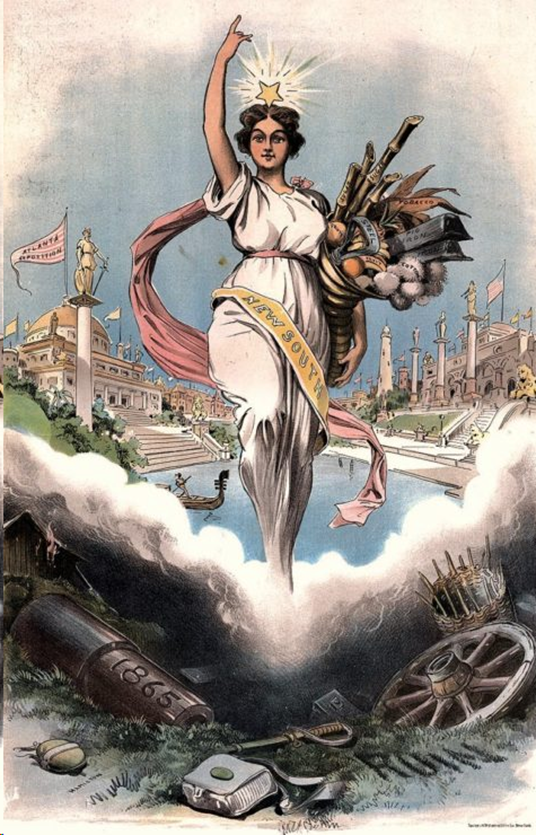
By shirleytwofeathers
Commemorates the storming of the Bastille, which started the French Revolution, on July 14th, 1789. Bastille Day is also celebrated by many of France’s former and current colonies.
For A Magickal Bastille Day
Theme: It’s time for a revolution!
Colours: Blue, white, and red
Symbols: The Eiffel Tower and the French national flag
Presiding Goddess: Lady Liberty
About Lady Liberty:
Although, Lady Liberty is not a goddess in the true sense of the word, she is a potent symbol of freedom. The statue of Liberty was a gift to the United States from the people of France. The statue is of a robed female figure representing Libertas, the Roman goddess of freedom, who bears a torch and a tabula ansata (a tablet evoking the law) upon which is inscribed the date of the American Declaration of Independence, July 4, 1776. A broken chain lies at her feet. The statue is an icon of freedom. In 1793, during the French Revolution, the Notre Dame de Paris cathedral was turned into a “Cult of Reason” and for a time “Lady Liberty” replaced the Virgin Mary on several altars.
To do today:
Time to take stock of your life and circumstances. Is it time for a revolution in your life? Is it time to break down barriers, make new rules, give yourself permission to be free of oppressive situations and/or relationships? Is it time to draw up your own Declaration of Independence, or as the French termed it, the Declaration of the Rights of Man and of the Citizen?
Here is a spell for personal freedom:
This spell taps directly into the energy and power of Bastille Day, and can be performed any time it is needed. You will need a length of blue, white, and red ribbon or yarn. It should be as long as you are tall. You can use three ribbons, each a solid colour, or one ribbon that is a combination of the three colours. You will also need an envelope, and a handful of dandelion fluff, or feathers, a small candle, and a knife or pair of scissors.
Light the candle, and then place the dandelion fluff into the envelope, and seal it shut. Those little bits of fluff or feathers represent your spirit. The envelope represents the walls you have created to protect yourself. Carefully fold or roll the envelope up so that will fit comfortably in your hand. You control your own destiny. It lies in your hands now.
Sit down, holding the envelope, and think about what restricts your freedom, what circumstances and situations starve your spirit, and steal your joy, what binds you, what constricts you, what holds you back. Begin to tie the ribbon around the envelope. There is no wrong way to bind up the envelope with the ribbon. Tie as many knots as you’d like. While you are binding the envelope, be thinking about the restrictions that bind your spirit. When you are complete, drip candle wax onto the bundle to seal it, and then snuff the candle.
Now, take the wrapped up envelope outside, along with the knife or scissors outside. Take a few moments to breathe in the outside air, listen to the sounds around you, notice the wind and the sky. You can be free. You can claim your freedom. Allow yourself to think about how it will feel to be free. When you are ready, begin to cut the strands of ribbon away from the envelope. As you do, say the following:
Bondage has no hold on me.
Beautiful Lady set me free.
When the ribbon is completely cut, very gently open the envelope and take out the dandelion fluff or feathers. Holding them in your hand, gently breathe into them and then hold them high and toss them free. Don’t worry if they simply fall to the ground. Any feathers or fluff that fails to fly free can be picked up and gently placed in an open spot where they will catch the breeze.
Burn or bury the remains of the envelope and the ribbon. When you go back inside, re-light your candle. You are now ready to let your own light shine. Allow the candle to burn completely.
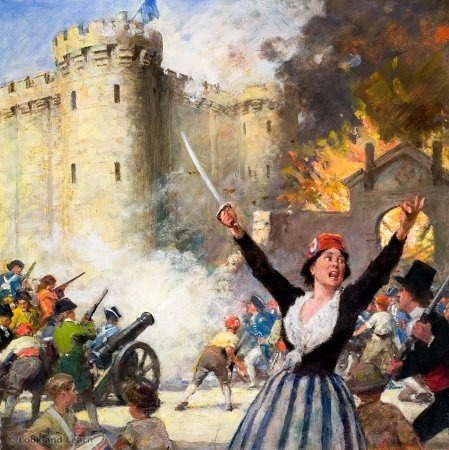
About Bastille Day:
What follows is an excerpt from a Paris newspaper account of the fall of the Bastille, on July 14, 1789:.
It was a terrible scene. . . . The fighting grew steadily more intense; the citizens had become hardened to the fire; from all directions they clambered onto the roofs or broke into the rooms; as soon as an enemy appeared among the turrets on the tower, he was fixed in the sights of a hundred guns and mown down in an instant;
meanwhile cannon fire was hurriedly directed against the second drawbridge, which it pierced, breaking the chains; in vain did the cannon on the tower reply, for most people were sheltered from it; the fury was at its height; people bravely faced death and every danger; women, in their eagerness, helped us to the utmost; even the children, after the discharge of fire from the fortress, ran her and there picking up the bullets and shot;
…and so the Bastille fell and the governor, De Launey, was captured … Serene and blessed liberty, for the first time, has at last been introduced into this abode of horrors, this frightful refuge of monstrous despotism and its crimes.
Interestingly, although the name of the Bastille evokes dark images of despotism and unjust imprisonment, in reality it was a great deal pleasanter than most ordinary prisons. A central part of the myth, and an indication of its potency, was the story of a prisoner supposedly forced to wear an iron mask to conceal his identity even from his guards – the sufferings of this Man in the Iron Mask were given wide publicity by Voltaire. Archives of the title reveal that there was indeed a masked prisoner from 1698 until 1703, when he died. The mask was made of velvet, and he was well treated.
It was originally built in the 14th century to guard one of main entrances to Paris, but by the 18th century the Bastille served only as a prison – mainly for political, aristocratic prisoners who could not be thrust into the crowded gaols with common criminals – and occasionally as a store for arms.The fortress also accommodated printers, booksellers and authors who produced works that the authorities considered seditious. Voltaire was imprisoned there twice: first in 1717 when he was suspected of writing verses accusing the Régent of incest, and then again in 1726. Throughout the 18th century there were never more than 40 inmates, most of them serving short sentences.
On the morning of 14 July 1789, the Bastille was nearly empty of prisoners, housing only seven old men annoyed by all the disturbance: four forgers, two “lunatics” and one “deviant” aristocrat, the Comte de Solages (the Marquis de Sade had been transferred out ten days earlier). The cost of maintaining a medieval fortress and garrison for so limited a purpose had led to a decision being taken to close it, shortly before the disturbances began. It was, however, a symbol of royal tyranny.
Upon learning that the Bastille had been taken, King Louis XVI, who was residing at Versailles, was reported to have asked an informer: “Is this a revolt?” and La Rochefoucauld-Liancourt said, “No, Sire, it is a revolution.” Little did Louis know that the mob’s next plan was to march to Versailles, and take him away with them as well.
Note: This post was put together by Shirley Twofeathers you may repost and share it only if you give me credit and a link back to this website. Blessed be.
https://shirleytwofeathers.com/The_Blog/pagancalendar/category/july-holidays/page/3/
0 notes